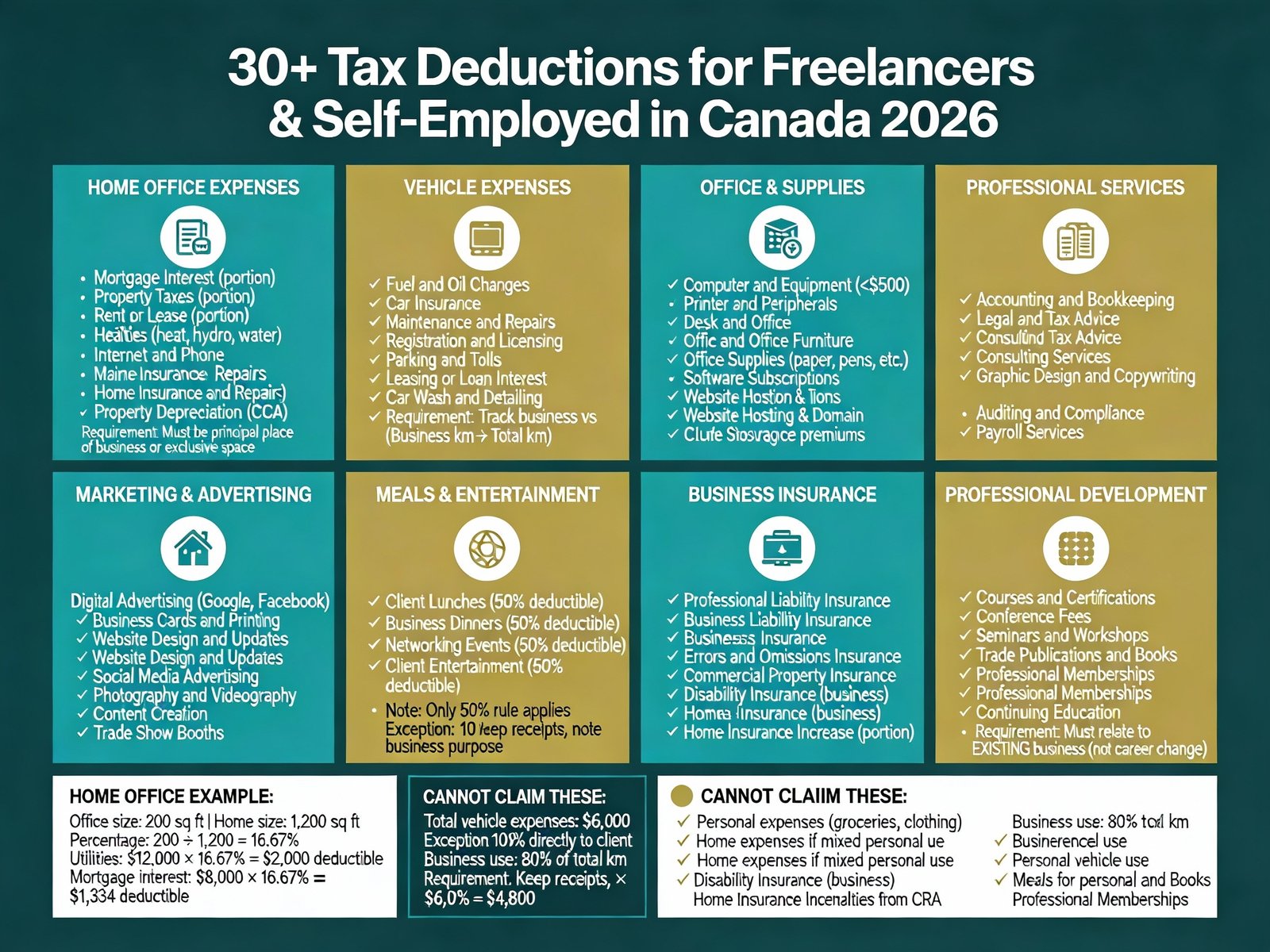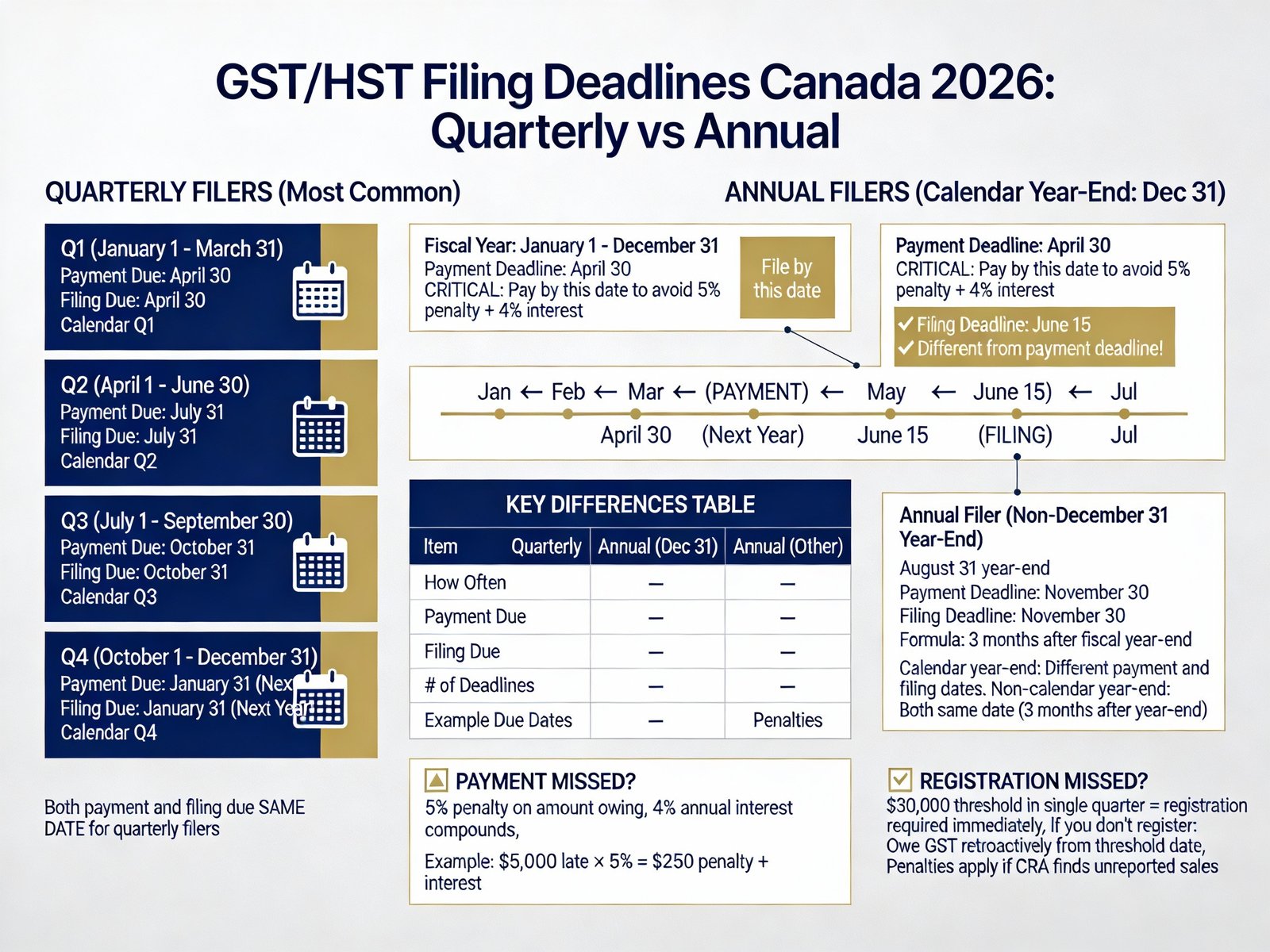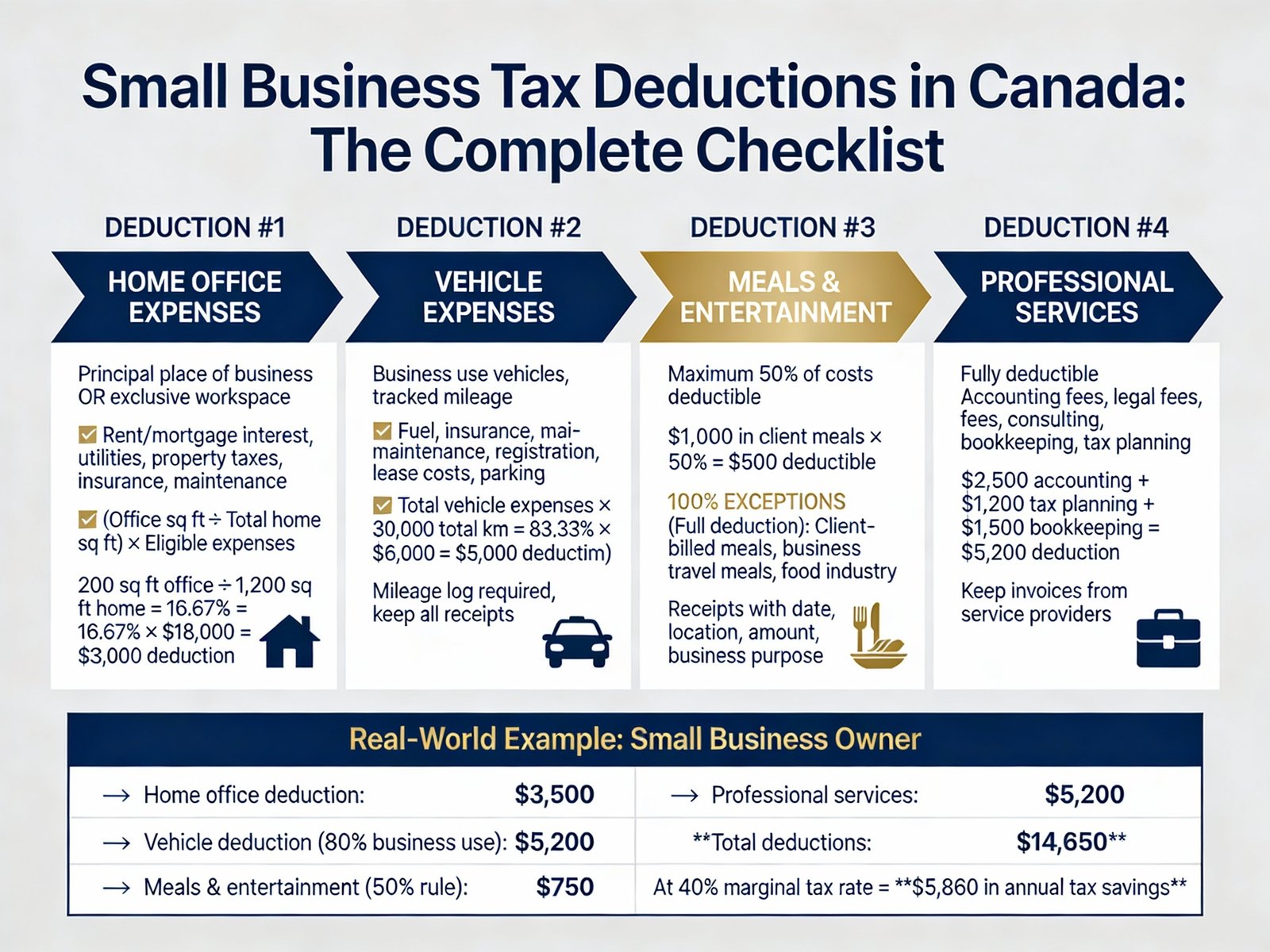The Ontario Employer Health Tax (EHT) plays a crucial role in funding the province’s healthcare system, presenting challenges and responsibilities for businesses operating in Ontario. This payroll tax, levied on employers, significantly impacts corporate social responsibility and financial planning for organizations of all sizes. Understanding the intricacies of EHT is essential for businesses to comply with their tax obligations and contribute to the sustainability of Ontario’s health services.
This comprehensive guide aims to shed light on the critical aspects of the Ontario Employer Health Tax. It will explore who must pay EHT, examine the exemptions and thresholds in place, and explain how to calculate the tax accurately. The guide will also cover registering for an EHT account, filing EHT returns, and managing installment payments. By delving into these topics, businesses can gain valuable insights to help them navigate the complexities of EHT and ensure compliance with Ontario’s tax regulations.

What is the Ontario Employer Health Tax (EHT)?
Definition and Purpose
The Ontario Employer Health Tax (EHT) is a payroll tax levied on employers in Ontario. It applies to remuneration paid to current and former employees, including salaries, wages, bonuses, taxable benefits, and stock options. The primary purpose of this tax is to generate revenue for funding Ontario’s healthcare system, ensuring that employers contribute directly to the province’s health services.
EHT is payable by employers on remuneration paid to employees who report for work at a permanent establishment in Ontario. It also applies to employees and former employees who don’t report for work at a permanent establishment but are paid from or through one in Ontario. The tax structure is designed to be progressive, with rates varying based on a company’s total payroll.
Historical Background
The Employer Health Tax was introduced in 1990 as a critical funding source for Ontario’s health care system. Since its inception, the EHT has undergone several changes to adapt to the province’s evolving economic landscape and healthcare needs.
A significant modification occurred on January 1, 1993, when self-employed individuals resident in Ontario with net self-employment income exceeding CAD 55,520.01 were also required to pay this tax at the same rates as employers.
In 1996, the Ontario Budget announced legislative changes to the Employer Health Tax Act. These changes exempted private sector employers with payrolls under CAD 555,200.07 and all self-employed individuals from paying EHT. This exemption was introduced over three years starting on January 1, 1997. Public sector employers were not affected by these changes.
Funding for Ontario Health Insurance Plan
The EHT supports the Ontario Health Insurance Plan (OHIP). Funds raised through this tax are used directly to finance health services, ensuring that companies play a significant part in maintaining public health.
The tax rates for EHT vary from 0.98% on total remuneration less than CAD 277,600.03 to 1.95% for remuneration over CAD 555,200.07. This progressive structure balances the tax burden by exempting small businesses to reduce their financial strain while ensuring larger businesses substantially contribute to healthcare funding.
In recent years, the Ontario government has adjusted the EHT exemption amount. For 2020, due to the particular circumstances caused by the COVID-19 pandemic, the exemption amount was increased from CAD 680,120.08 to CAD 1.39 million. This increase was made permanent in 2021. The exemption amount is scheduled for adjustment for inflation on January 1, 2029.
It’s important to note that while EHT revenues were reduced by about CAD 402.52 million due to these changes, an additional CAD 360.88 million was generated from the new Fair Share Health Care Levy. This levy was incorporated into the existing surtax on Ontario personal income tax, helping to offset the reduction in EHT revenue.
Who is Required to Pay EHT?
The Ontario Employer Health Tax (EHT) applies to many provincial employers. Understanding who must pay this tax is crucial for businesses to ensure compliance with Ontario’s tax regulations.
Eligible employers
Eligible employers generally include private-sector employers, crown corporations subject to tax under Part I of the Income Tax Act (Canada), and organizations that receive financial assistance from any level of government but are not under government control. These organizations should not have municipal-appointed representatives on their boards of directors.
Non-eligible employers, on the other hand, typically include:
- Public sector employers (federal, provincial, and municipal governments)
- Universities, colleges, school boards, and hospitals
- Crown agencies not subject to tax under Part I of the Income Tax Act (Canada)
- Employers exempt from income tax under specific paragraphs of the Income Tax Act (Canada)
- Corporations, boards, authorities, commissions, offices, or organizations where the federal or provincial government appoints the majority of directors
- Organizations where a municipality has the power to appoint one or more directors or officers
It’s important to note that eligibility for the tax exemption generally depends on the composition of the employer’s board of directors. If the board members are elected without legislative, regulative, or government requirements for government representation, the employer is typically eligible for the tax exemption.
Permanent establishment criteria
The concept of a permanent establishment plays a crucial role in determining EHT obligations. A permanent establishment in Ontario includes any fixed place of business where day-to-day activities are carried out, such as an office, agency, branch, factory, warehouse, or workshop.
Employers are required to pay EHT on remuneration paid to:
- Employees who report for work at a permanent establishment in Ontario
- Employees who don’t report for work at any permanent establishment but are paid from or through an Ontario permanent establishment
An employee is considered to report for work at a permanent establishment if they physically come to the location to work or can reasonably be regarded as attached to the establishment.
Remote work considerations
The rise of remote work has introduced new complexities to EHT obligations. An employee’s home office is generally not considered a permanent employer establishment. However, it may be deemed as such if it meets specific criteria:
- The home office is used regularly for essential business functions, including in-person client meetings
- The employee is required to provide the home office as a condition of employment, and the employer has control over the space
- The office is objectively identified with the employer’s business (e.g., through signage or listing on the company website)
For employees working remotely outside Ontario, their remuneration may still be subject to EHT if they have a direct reporting relationship to a supervisor at an Ontario permanent establishment and do not physically report to any fixed place of business belonging to the employer.
It’s crucial for employers to carefully assess their specific situations, as the determination of EHT obligations can be complex, especially in cases involving remote work arrangements or operations across multiple provinces. Seeking professional advice from accounting firms like BOMCAS Canada can help ensure compliance with EHT regulations and optimize tax planning strategies.
EHT Exemptions and Thresholds
The Ontario Employer Health Tax (EHT) system includes provisions for exemptions and thresholds, which play a crucial role in determining an employer’s tax obligations. These exemptions are designed to provide relief to small businesses and eligible employers while ensuring larger organizations contribute their fair share to the province’s healthcare funding.
Current exemption amount
As of 2020, the Ontario government has increased the EHT exemption amount to CAD 1.39 million. This change, initially implemented due to the particular circumstances caused by the COVID-19 pandemic, has been made permanent. The exemption amount is scheduled to remain at this level through 2028, with an adjustment for inflation planned for January 1, 2029. This increase from the previous exemption of CAD 680,120.08 in 2019 represents a significant relief for eligible employers.
Eligibility criteria for exemptions
To claim the tax exemption, employers must meet specific criteria:
- They must be an eligible employer as defined under the EHT Act.
- They must pay income taxes.
- Their Ontario payroll for the year, including payroll for any associated employers, must be less than CAD 6.94 million.
- Any level of government must not control them.
- Their board of directors must not include any municipal representatives.
It’s important to note that registered charities can claim the exemption even if their payroll exceeds CAD 6.94 million. Eligible employers generally include private-sector employers, crown corporations subject to tax under Part I of the Income Tax Act (Canada), and organizations receiving financial assistance from any level of government but not under government control.
Non-eligible employers typically include public sector employers, crown agencies not subject to tax under Part I of the Income Tax Act (Canada), and organizations where the federal or provincial government appoints most directors.
Associated employers and exemption sharing
For associated employers, the EHT exemption rules become more complex. Associated employers share ownership of the business or have a combination of ownership and individual relationships. These employers are required to share a single annual exemption among the group.
Critical points for associated employers include:
- The combined total Ontario remuneration of all associated employers must not exceed CAD 6.94 million to qualify for the exemption.
- Associated employers must agree to allocate the CAD 1.39 million exemption among the group members.
- Only one associated group member must complete and submit the Associated Employers Exemption Allocation form by the return due date (March 15).
- If the total Ontario remuneration for the associated group exceeds CAD 6.94 million, the members cannot claim the exemption.
It’s crucial to note that the federal election is not to be associated with the purposes of the small business deduction and does not apply to EHT purposes. Corporations cannot opt out of being associated to claim the EHT exemption.
For businesses navigating the complexities of EHT exemptions and thresholds, especially in cases involving associated employers or unique organizational structures, seeking professional advice from accounting firms like BOMCAS Canada can be invaluable. Their expertise can help ensure compliance with EHT regulations and optimize tax planning strategies.
Calculating EHT
EHT Tax Rates
The Ontario Employer Health Tax (EHT) uses a progressive tax rate structure based on an employer’s total Ontario remuneration. The tax rates for 2023 and 2024 are as follows:
| Total Ontario Remuneration | Tax Rate |
|---|---|
| Up to CAD 277,600.03 | 0.98% |
| CAD 277,600.05 to CAD 319,240.04 | 1.101% |
| CAD 319,240.05 to CAD 360,880.04 | 1.223% |
| CAD 360,880.06 to CAD 402,520.05 | 1.344% |
| CAD 402,520.06 to CAD 444,160.05 | 1.465% |
| CAD 444,160.07 to CAD 485,800.06 | 1.586% |
| CAD 485,800.07 to CAD 527,440.06 | 1.708% |
| CAD 527,440.08 to CAD 555,200.07 | 1.829% |
| Over CAD 555,200.07 | 1.95% |
It’s important to note that the first CAD 1,388,000.17 of payroll is excluded from EHT calculations for eligible employers.
Remuneration Inclusions
For EHT purposes, remuneration includes all payments, benefits, or allowances that must be included in an employee’s income under sections 5, 6, or 7 of the Federal Income Tax Act. This encompasses a wide range of compensation types, such as:
- Salary and wages
- Bonuses and commissions
- Vacation pay
- Taxable allowances and benefits
- Directors’ fees
- Payments for casual labor
- Advances in future earnings
- Stock option benefits
- Tips and gratuities paid through an employer
- Employer contributions to Group RRSPs
- Employer-paid premiums on group life insurance
- Signing bonuses
- Performance-based rewards and incentive awards
- Top-up payments for employment insurance or WSIB benefits
Understanding that remuneration for EHT purposes goes beyond basic salary and wages is crucial. Employers must consider various forms of compensation when calculating their EHT obligations.
Calculation Formula and Examples
The formula for calculating EHT is straightforward:
(Ontario payroll for the year – tax exemption) × applicable tax rate
To determine the amount of EHT payable, employers should follow these steps:
- Calculate the total Ontario remuneration for the year.
- Subtract the tax exemption amount (if eligible).
- Apply the appropriate tax rate based on the total remuneration.
For example, an employer with an Ontario payroll of CAD 215,140.03, without any tax exemption, would have a tax rate of 0.98%. Their EHT calculation would be:
CAD 215,140.03 × 0.0098 = CAD 2,108.37
This employer would pay CAD 2,108.37 in EHT for the year.
The calculation would be adjusted accordingly for employers eligible for the tax exemption. For instance, if an employer has a total Ontario remuneration of CAD 1,500,000 and is eligible for the total exemption of CAD 1,388,000.17, their taxable remuneration would be:
CAD 1,500,000 – CAD 1,388,000.17 = CAD 111,999.83
The applicable tax rate for this amount is 0.98%, resulting in an EHT payable of:
CAD 111,999.83 × 0.0098 = CAD 1,097.60
It’s essential for employers to accurately calculate their EHT obligations to ensure compliance with Ontario tax regulations. BOMCAS Canada, as a trusted accounting firm in Canada, can provide valuable support for businesses navigating the complexities of EHT calculations and other tax return services.
Registering for an EHT Account
When to Register
Under specific circumstances, employers in Ontario are responsible for registering for an Employer Health Tax (EHT) account with the Ontario Ministry of Finance. This obligation applies to employers who fall into one of two categories:
- Those who are not eligible for the tax exemption
- Those who are eligible for the exemption but whose payroll exceeds their allowable exemption amount
Businesses must understand their status regarding the EHT exemption threshold. As of 2014, the exemption threshold is CAD 6.94 million for associated groups. Employers whose combined annual Ontario remuneration surpasses this amount cannot claim any exemption.
Required Information
Before initiating the registration process, employers should gather essential information about their organization. This preparation ensures a smooth and efficient registration experience. The following details are necessary:
- Legal name and trade name of the business
- Business address and mailing address
- Telephone and fax numbers
- Name of the contact person or authorized representative
- Payroll start date and frequency
- Federal business number (BN)
- Employer type (e.g., associated, multiple accounts, or public sector employer)
This readily available information streamlines the registration process and helps avoid potential delays or complications.
Registration Process
The Ontario Ministry of Finance offers multiple avenues for employers to register for an EHT account. These options cater to different preferences and circumstances:
- Online Registration:
Employers can use the Service Finder portal to complete their registration electronically. This method offers convenience and efficiency for those comfortable with online processes. - In-Person Registration:
For those who prefer face-to-face interactions, setting up an appointment with a Ministry of Finance representative is an option. Employers can call 1-866-ONT-TAXS (1-866-668-8297) to schedule an in-person registration session. - Self-Help Workstation:
ServiceOntario centers provide self-help workstations where employers can complete their registration independently. This option combines the benefits of in-person assistance with self-service convenience.
Regardless of the chosen method, employers should ensure they have all the required information to facilitate a smooth registration process.
Once registered, the Ministry of Finance will provide employers with the necessary forms and information to manage their EHT obligations. This includes annual returns, which must be filed for each account with Taxable Ontario Remuneration.
It’s important to note that if an employer doesn’t receive a return and their Ontario payroll for the year exceeds their allowable exemption amount, they should contact the ministry at 1-866-ONT-TAXS (1-866-668-8297) to request a copy of their personalized return.
For employers navigating the complexities of EHT registration and compliance, seeking professional assistance can be beneficial. BOMCAS Canada, a trusted accounting firm in Canada, offers support for accounting and tax return services, including guidance on EHT-related matters.
By understanding the registration requirements and process, employers can ensure they meet their EHT obligations effectively, contributing to the funding of Ontario’s healthcare system while managing their tax responsibilities efficiently.
Filing EHT Returns
Annual Return Requirements
Employers subject to the Ontario Employer Health Tax (EHT) must file an annual return for each calendar year. This return reconciles the yearly tax due with the installments paid yearly. The filing requirement applies to several categories of employers:
- All employers who received their EHT Annual Return from the Ministry of Finance
- Eligible employers whose “Total Ontario Gross Remuneration” exceeds their available exemption for the year
- Eligible employers with annual “Total Ontario Gross Remuneration” that does not exceed their available exemption amount if they:
- Were members of an associated group on December 31 of the tax year
- Made EHT installment payments during the year
- New eligible employers whose annual “Total Ontario Gross Remuneration” is more significant than their allowable prorated exemption amount
It’s important to note that even if Ceridian is remitting on behalf of an employer, the responsibility for balancing payments and filing the annual return still rests with the employer.
Due Dates
The EHT annual return has a specific due date that employers must adhere to. For instance, the yearly return for the 2023 tax year is due on or before March 15, 2024. This deadline applies to all employers required to file the return.
To ensure timely submission, employers have several options for filing and paying their EHT:
- Through ONT-TAXS online
- In person at specific ServiceOntario centers
- By mail to the Ministry of Finance at:
Ministry of Finance
33 King St W
PO Box 620
Oshawa ON L1H 8E9 - Using the EHT Annual Return Portal (for filing returns without making a payment)
If an employer’s completed EHT return reflects a balance owing, they must submit the payment to the Ministry of Finance along with their Annual EHT return. Conversely, if the return shows a credit balance and the Ministry of Finance deems it valid, the employer will receive a refund directly from the ministry.
Special and Final Returns
There are exceptional circumstances that require employers to file returns outside of the regular annual filing:
- Business Closure or Amalgamation:
Employers who cease to have a permanent establishment, amalgamate, or no longer have employees in Ontario must advise the Ministry of Finance. In such cases, a final EHT return must be filed within 40 days of the business closure date or date of amalgamation. This return should cover the part of the calendar year during which payroll was paid. Any outstanding liabilities must be remitted with the final return. - Unreported Remuneration:
If an employer forgot to report some remuneration when filing the annual return, they have options to correct the financial information:- Call the Ministry of Finance at 1-866-668-8297
- File an amended return for the period in question
- Send a letter to the ministry detailing the required adjustments
Financial information must be corrected within four years from the return’s due date.
- Prior Year Returns:
Employers who failed to file EHT annual returns for prior years when they should have may qualify for the ministry’s voluntary disclosure program. Under this program, employers won’t be penalized for late filing if they:- Initiate the disclosure themselves before any audit or enforcement action by the ministry
- Pay the tax owing, plus any applicable interest
For employers navigating the complexities of EHT returns, seeking professional assistance can be beneficial. BOMCAS Canada, a trusted accounting firm in Canada, offers support for accounting and tax return services, including guidance on EHT-related matters. Their expertise can help ensure compliance with EHT regulations and optimize tax planning strategies.
Payment and Installments
The Ontario Employer Health Tax (EHT) system has specific requirements for payment and installments, which vary based on an employer’s total Ontario remuneration. Understanding these requirements is crucial for businesses to ensure compliance with tax regulations and avoid penalties.
Payment Methods
Employers have several options for paying their EHT obligations:
- ONT-TAXS online: This platform allows for convenient electronic payments.
- In-person payments: Certain ServiceOntario centers accept EHT payments.
- Online banking: Many financial institutions offer EHT payment services through their online banking platforms.
- Mail: Payments can be sent to the Ministry of Finance at 33 King St W, PO Box 620, Oshawa, ON L1H 8E9.
When making payments, employers should use cheques or money orders in Canadian funds, payable to the Minister of Finance. Cash payments are not accepted.
Installment Thresholds
The requirement for installment payments is based on the employer’s payroll from the prior year. As of 2021, the threshold for monthly installments has changed:
- For employers with total Ontario remuneration greater than CAD 1.67 million: Monthly installments are mandatory.
- For employers with total Ontario remuneration less than CAD 1.67 million: Monthly installments are not required.
Before 2021, the threshold for monthly installments was CAD 832,800.10. This change represents a significant shift in the payment structure for many Ontario employers.
New employers in their first or second year of operation should estimate their annual payroll for the current year to determine if they need to make installment payments. If the estimated yearly payroll exceeds CAD 1.67 million, installment payments are required as soon as the payroll surpasses the installment threshold for the year.
Calculating Installment Payments
The calculation of EHT installment payments follows a similar process to the general EHT calculation but every month. Here’s an example to illustrate the process:
Assume an employer has a monthly payroll of CAD 291,480.04, resulting in an annual payroll of CAD 3,497,760.42. The first CAD 1.39 million is exempt from the tax. Therefore:
- January to May: No tax payments are required as the total payroll (CAD 1,457,400.18) is still within the exemption threshold.
- June: The total payroll reaches CAD 1,748,880.21, exceeding the CAD 1.67 million threshold. The taxable amount for June is CAD 360,880.04 (total payroll minus exemption).
- June payment calculation: CAD 360,880.04 × 1.95% (tax rate) = CAD 7,037.16
- July onwards: Monthly installment = CAD 291,480.04 × 1.95% = CAD 5,683.86
It’s important to note that even with monthly installments, employers must still file an annual return on or before March 15th of the following calendar year. This return reconciles the annual tax due with the installments paid yearly.
For employers navigating the complexities of EHT payments and installments, seeking professional assistance can be beneficial. BOMCAS Canada, a trusted accounting firm in Canada, offers support for accounting and tax return services, including guidance on EHT-related matters. Their expertise can help ensure compliance with EHT regulations and optimize tax planning strategies.
Conclusion
The Ontario Employer Health Tax (EHT) is crucial in funding the province’s healthcare system while presenting challenges and responsibilities for businesses. This guide has shed light on the critical aspects of EHT, including who needs to pay, exemptions and thresholds, calculation methods, and the processes for registration, filing returns, and making payments. By understanding these intricacies, businesses can better navigate the complexities of EHT and ensure compliance with Ontario’s tax regulations.
For companies looking to handle their EHT obligations effectively, having expert guidance can make a significant difference. BOMCAS Canada is your accounting firm when you need support with accounting and tax return services. Their expertise can help businesses optimize their tax planning strategies and stay on top of their EHT responsibilities. While EHT may seem complex, with the proper knowledge and support, companies can manage their obligations efficiently, contributing to Ontario’s healthcare system while maintaining their financial health.










 View Our Location
View Our Location





 181 Meadowview Bay, Sherwood Park, AB T8H 1P7, Canada (Online Clients Only)
181 Meadowview Bay, Sherwood Park, AB T8H 1P7, Canada (Online Clients Only)